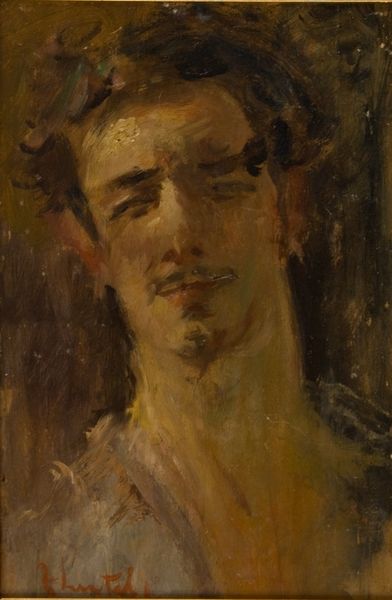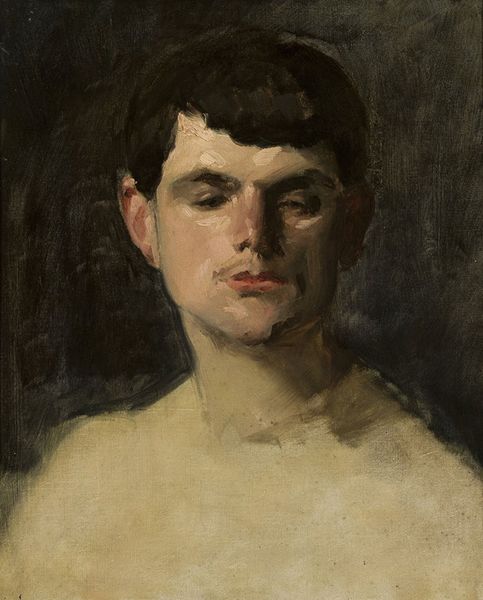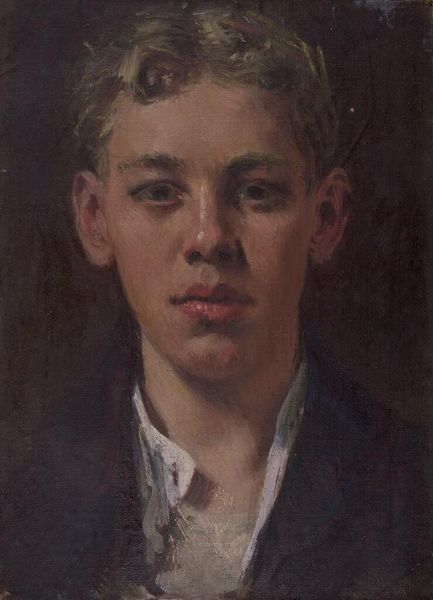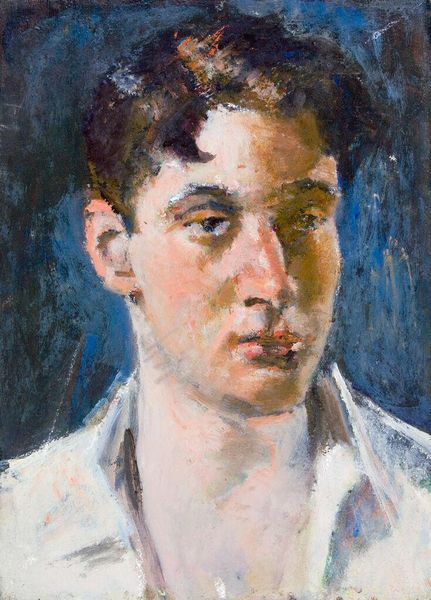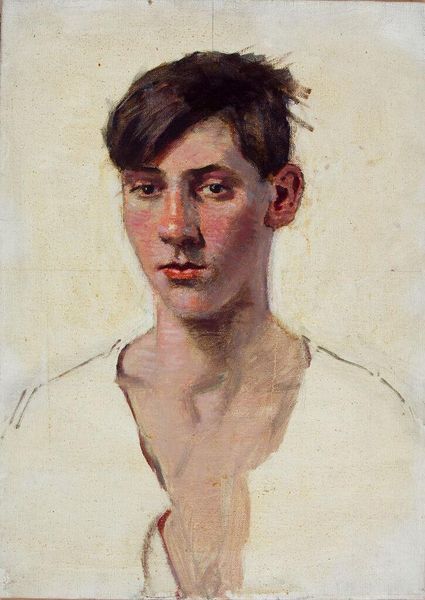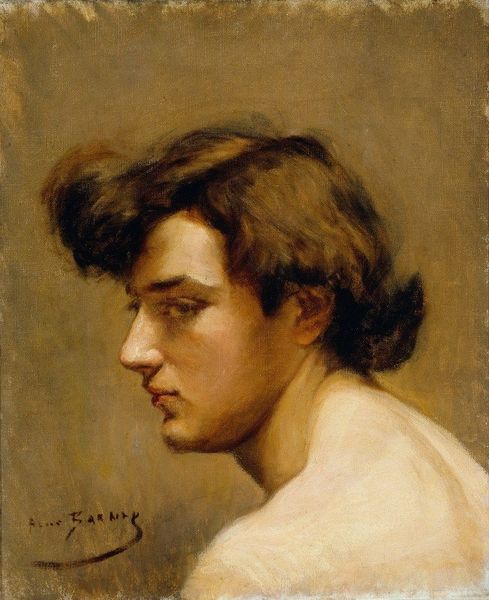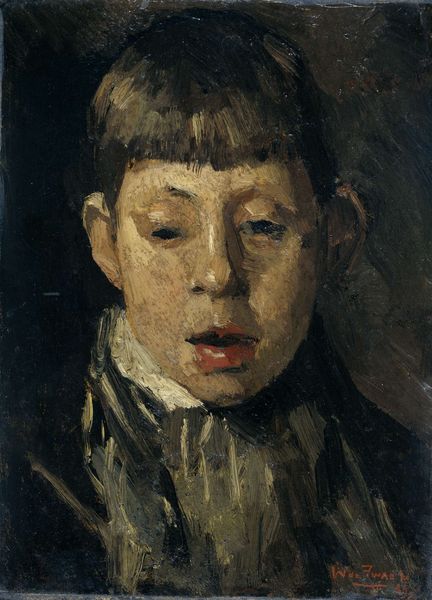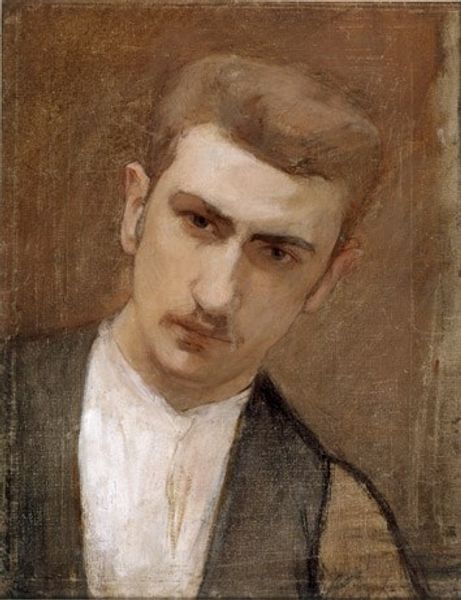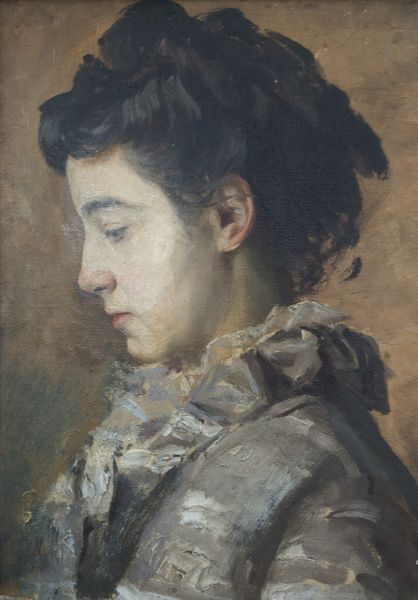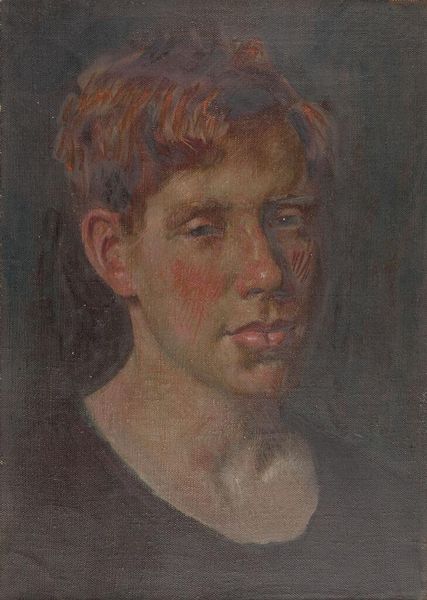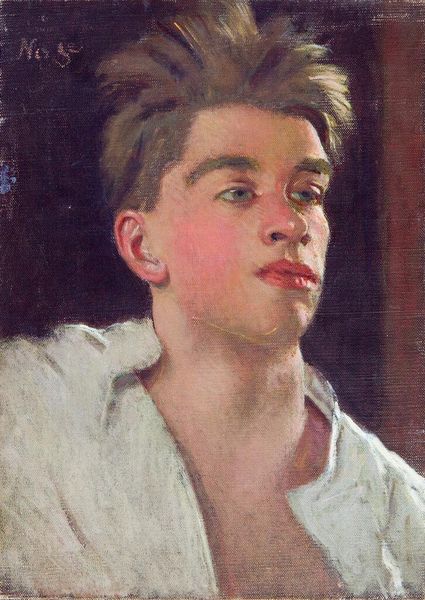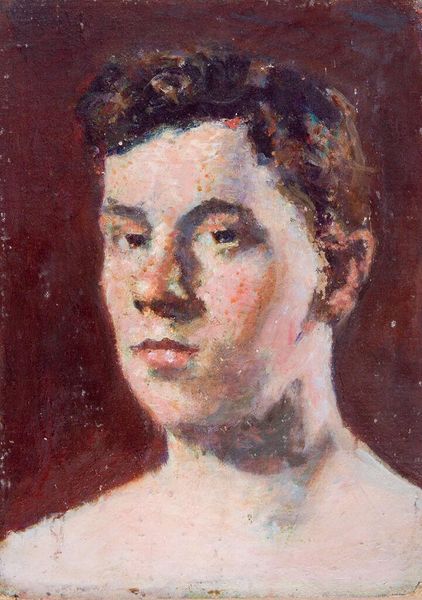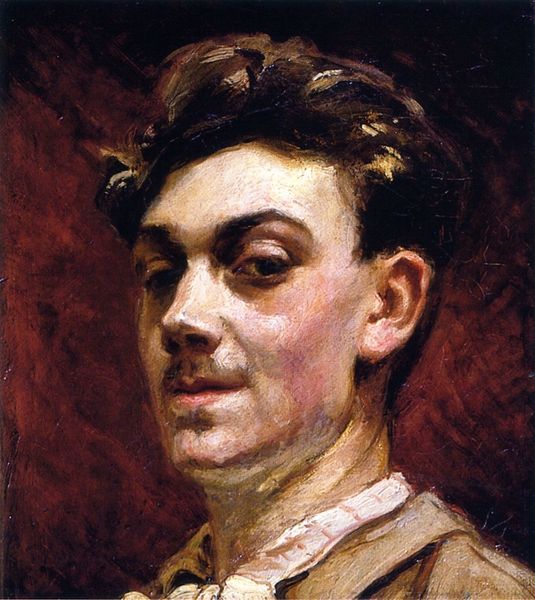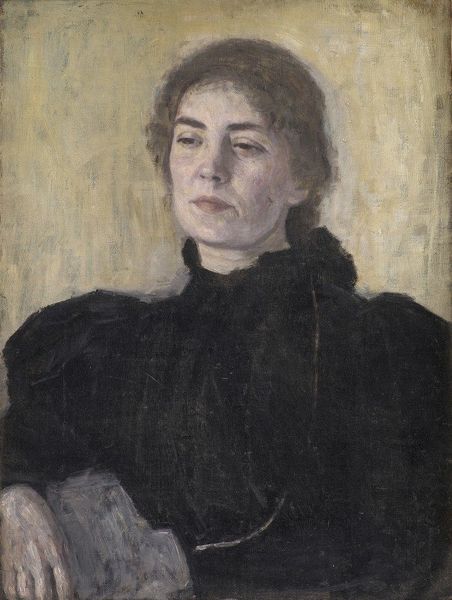
oil-paint, impasto
#
portrait
#
self-portrait
#
oil-paint
#
oil painting
#
impasto
#
modernism
#
realism
Copyright: Public Domain: Artvee
Editor: Here we have Ramón Casas's *Self-Portrait*, circa 1882, rendered in oil paint. What strikes me is the subject's closed eyes; it conveys such an introspective, almost vulnerable mood. What do you make of it? Curator: It's fascinating to consider this portrait in the context of its time. Casas, painting in the late 19th century, positions himself within a complex social landscape. Who gets to represent themselves, and how? A self-portrait is not merely a reflection; it's an assertion of identity and agency, particularly relevant when we consider class and societal expectations of artists. What kind of statement is he trying to make with this representation? Editor: I hadn't thought of it that way, as an assertion! He appears so withdrawn, though, almost like he's rejecting the viewer's gaze. Curator: Precisely. Is he rejecting the established art world’s gaze, too? Perhaps reflecting a sense of alienation, questioning the traditional power structures within artistic representation itself? Does the impasto style, so physical and present, conflict with his seeming introversion? It feels almost like a rebellion rendered in paint. Editor: It does seem rebellious, now that you point it out. The texture becomes another layer of communication. Curator: Exactly! And that brings up critical questions about the role of the artist within society and their power to subvert norms. Thinking about it makes me consider other marginalized artists during the same period. Editor: Wow, this quick glimpse into the artwork really shed a different light on how I perceived it. Thank you for sharing. Curator: The pleasure was all mine! It’s always exciting to view art through new lenses.
Comments
No comments
Be the first to comment and join the conversation on the ultimate creative platform.
